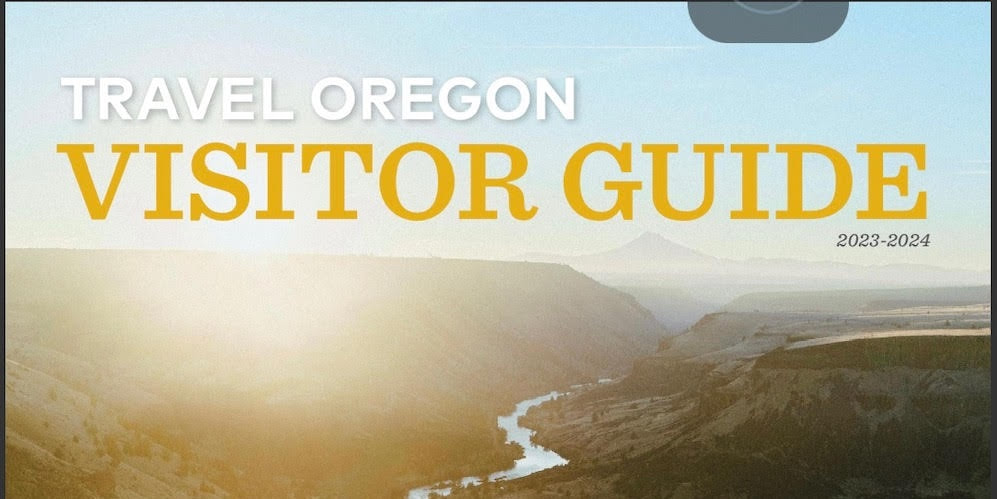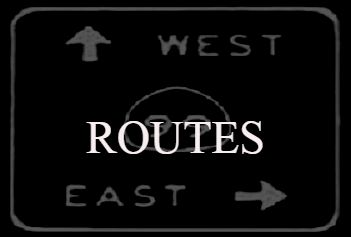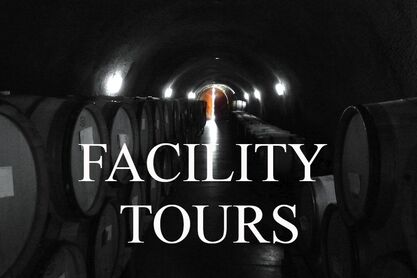Hood River
The first permanent settlers in the Hood River area, filed a Donation Land Claim in 1854.
Hood River originates on the flanks of Mount Hood and flows north, merging with the Columbia River twenty-two miles upstream of the Bonneville Dam. It was named after Mount Hood, which is visible from the Columbia River. And Mount Hood was named after the British admiral Lord Samuel Hood in 1792, by Lieutenant Broughton, of the Captain George Vancouver Expedition. Broughton sailed up the Columbia River, reaching Point Vancouver, at about Troutdale.
They said, "... The same remarkable mountain that had been seen from Belle Vue point again presented itself, bearing at this station; and though the party were now nearer to it by seven leagues (about 20 miles), yet its lofty summit was scarcely more distinct across the intervening land, which was more than moderately elevated. Mr. Broughton honored it with Lord Hood's name; its appearance was magnificent; and it was clothed in snow from its summit, as low down as the high land, by which it was intercepted, rendered it visible. ..."
Upstream from Hood River are the small towns of Mosier, Rowena Gap, Mayer State Park and The Dalles. Downstream from Hood River is the Columbia Gorge Hotel, Ruthton Point, and Mitchell Point. The White Salmon River and the community of Bingen are across the Columbia River on the Washington side.
Lewis and Clark passed the mouth of the Hood River on October 29, 1805, and named it "Labiech's river", after one of their members, Private Francois Labieche.
They wrote, "... the mouth of a Small river 40 yards wide on the Lard. Side ... from the mouth of this little river which we shall Call Labeasche River, the falls mountain is South and the top is covered with Snow ..."
The Hood River Valley landscape was shaped by glaciation and flooding, and is characterized by steep, narrow valleys and terraces of clay, silt, sand, gravel and boulders. The valley extends for 20 miles with a width of 5 miles. The east wall of the valley is a fault escarpment with a vertical displacement of more than 2,000 feet. The Hood River Canyon is incised 200 to 300 feet below the valley surface. Rock formations along the Hood River system are primarily basalts of the Columbia River Basalt Group.
During the Missoula Floods, 12 to 15 thousand years ago, the Hood River Valley was inundated by backwater from the floods, like the Willamette Valley.
"... The first automobile introduced into town (circa 1905) was nicknamed the 'potato bug'. Residents were amused at the new device as it wistfully chugged down the hill from the Heights to downtown. And then had to be pulled back up the hill by a team of horses. The town boasted of 71 cars (with many more horses) in 1910, and had passed an ordinance limiting the speed of the automobiles to 10 miles per hour. By 1911, 117 cars were in Hood River; ranking fifth in the number of autos in the entire state.
The Mount Hood Railroad next to the hotel is on the National Historic Register. And the Hood River museum displays some early Hood River automobiles.
Hood River originates on the flanks of Mount Hood and flows north, merging with the Columbia River twenty-two miles upstream of the Bonneville Dam. It was named after Mount Hood, which is visible from the Columbia River. And Mount Hood was named after the British admiral Lord Samuel Hood in 1792, by Lieutenant Broughton, of the Captain George Vancouver Expedition. Broughton sailed up the Columbia River, reaching Point Vancouver, at about Troutdale.
They said, "... The same remarkable mountain that had been seen from Belle Vue point again presented itself, bearing at this station; and though the party were now nearer to it by seven leagues (about 20 miles), yet its lofty summit was scarcely more distinct across the intervening land, which was more than moderately elevated. Mr. Broughton honored it with Lord Hood's name; its appearance was magnificent; and it was clothed in snow from its summit, as low down as the high land, by which it was intercepted, rendered it visible. ..."
Upstream from Hood River are the small towns of Mosier, Rowena Gap, Mayer State Park and The Dalles. Downstream from Hood River is the Columbia Gorge Hotel, Ruthton Point, and Mitchell Point. The White Salmon River and the community of Bingen are across the Columbia River on the Washington side.
Lewis and Clark passed the mouth of the Hood River on October 29, 1805, and named it "Labiech's river", after one of their members, Private Francois Labieche.
They wrote, "... the mouth of a Small river 40 yards wide on the Lard. Side ... from the mouth of this little river which we shall Call Labeasche River, the falls mountain is South and the top is covered with Snow ..."
The Hood River Valley landscape was shaped by glaciation and flooding, and is characterized by steep, narrow valleys and terraces of clay, silt, sand, gravel and boulders. The valley extends for 20 miles with a width of 5 miles. The east wall of the valley is a fault escarpment with a vertical displacement of more than 2,000 feet. The Hood River Canyon is incised 200 to 300 feet below the valley surface. Rock formations along the Hood River system are primarily basalts of the Columbia River Basalt Group.
During the Missoula Floods, 12 to 15 thousand years ago, the Hood River Valley was inundated by backwater from the floods, like the Willamette Valley.
"... The first automobile introduced into town (circa 1905) was nicknamed the 'potato bug'. Residents were amused at the new device as it wistfully chugged down the hill from the Heights to downtown. And then had to be pulled back up the hill by a team of horses. The town boasted of 71 cars (with many more horses) in 1910, and had passed an ordinance limiting the speed of the automobiles to 10 miles per hour. By 1911, 117 cars were in Hood River; ranking fifth in the number of autos in the entire state.
The Mount Hood Railroad next to the hotel is on the National Historic Register. And the Hood River museum displays some early Hood River automobiles.
More info HERE.
PLAY AUDIO OF EARLY HOOD RIVER AUTOS AND HORSES















